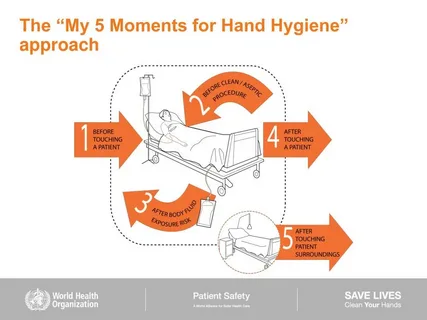In the fast-paced, high-stakes world of the meat industry Australia is known for, hygiene isn’t just a regulatory requirement—it’s a cornerstone of quality, safety, and operational success. From the kill floor to the boning room, every surface, blade, and workstation must meet strict sanitation standards. That’s where the right abattoir hygiene equipment and slaughterhouse supplies come into play.
This guide explores the essential cleaning tools, PPE, and cutting gear that help Australian abattoirs maintain world-class hygiene standards—while improving efficiency, reducing contamination risks, and protecting both staff and product.
Why Hygiene Is Non-Negotiable in Australian Abattoirs
Cross-contamination, bacterial growth, and biofilm buildup can all compromise meat quality and safety. In a sector where exports are vital and consumer trust is everything, hygiene failures can be catastrophic.
Key hygiene risks include:
- Blood and fat residue on tools and surfaces
- Improperly sanitised knives and aprons
- Inadequate hand and boot washing stations
- Poor airflow or drainage in processing zones
To combat these, facilities must invest in high-quality abattoir hygiene equipment and enforce strict cleaning protocols across all departments. Hygiene isn’t just about compliance—it’s about brand protection, product integrity, and long-term profitability.
Essential Hygiene Tools for Slaughterhouse Operations
Cleaning Tools and Sanitation Systems
Modern cleaning tools are designed for speed, coverage, and compliance. These include:
- High-pressure hose systems for walls, floors, and equipment
- Foamers and chemical dispensers for sanitising agents
- Knife sterilisers and blade baths for between-carcass cleaning
- Hand and boot wash stations at all entry points
Many facilities also use Kentmaster gear for integrated sanitation—combining cutting tools with built-in cleaning features to reduce downtime and contamination risk. These systems are designed to work seamlessly with other slaughterhouse supplies, ensuring a consistent hygiene standard across the board.
Knife Hygiene: Clean Blades, Clean Cuts
Knives are the most frequently used—and most frequently contaminated—tools in any abattoir. That’s why maintaining a clean, sharp edge is essential.
Best practices include:
- Using whetstones and the best knife sharpener to maintain edge integrity
- Rotating knives throughout the shift to allow for cleaning and cooling
- Storing blades in sanitised racks or magnetic strips
- Cleaning knives between species or carcass types
Whether you’re using professional butcher knives, a butcher’s knife, or a hunting knife, hygiene starts with blade care. Many processors in Australia source their blades from trusted knife stores and knife shop Australia suppliers who offer both quality and compliance.
PPE and Apparel: The First Line of Defence
Personal protective equipment (PPE) is critical for both hygiene and safety. The right gear prevents contamination from clothing, skin, and external surfaces.
Essential PPE includes:
- Waterproof butchers’ apron and sleeve protectors
- Cut-resistant safety gloves for knife handling
- Hairnets, beard covers, and disposable caps
- Non-slip, sanitised boots
All PPE should be cleaned daily and stored in ventilated lockers. Facilities should also provide spare gear for shift changes and emergency replacements. Investing in high-quality PPE not only protects your team—it reinforces a culture of hygiene and professionalism.
Premium Knives That Support Hygiene and Performance
Not all knives are created equal. In high-volume environments, you need blades that stay sharp, clean easily, and resist corrosion.
Top choices in Australia include:
- Premium knife sets for multi-tasking stations
- Quality skinning knives for hide removal and trimming
- Professional cleaver and heavy-duty cleaver tools for bone work
- Premium chef knives and kitchen knife sets for prep areas
- Best kitchen knives for foodservice and retail butchery
Sourcing from a reputable knife shop in Australia ensures your blades meet both hygiene and performance standards. Look for NSF-certified or food-safe stamped blades for added assurance.
Integrated Hygiene Systems: From Kill Floor to Cold Room
Hygiene doesn’t stop at the blade. The most advanced abattoirs in Australia use integrated systems that combine abattoir hygiene equipment with workflow design.
Examples include:
- Knife sterilisation stations at every workstation
- Colour-coded tools and PPE to prevent cross-contamination
- Drainage systems that prevent standing water and bacterial growth
- UV sanitation systems in cold rooms and dry-ageing chambers
By embedding hygiene into every stage of processing, facilities reduce risk, improve audit outcomes, and extend the shelf life of their products.
Training and Culture: Hygiene Is Everyone’s Job
Even the best slaughterhouse supplies won’t make a difference without proper training. Hygiene must be part of the culture—from the newest apprentice to the most seasoned boner.
Training should include:
- Proper use and cleaning of cleaning tools and PPE
- Knife care and sanitation routines
- Daily hygiene checklists and shift change protocols
- Emergency response for contamination events
Many suppliers of abattoir hygiene equipment and professional knife set packages also offer training support, helping teams stay compliant and confident.
Cold Room Hygiene and Knife Storage
Cold rooms are critical for preserving meat quality—but they can also be hotspots for contamination if not properly managed.
Best practices include:
- Installing UV systems to reduce microbial load
- Using stainless steel racks for knife and tool storage
- Ensuring knives are fully dry before entering cold storage
- Rotating premium knives in Australia to avoid overuse and blade fatigue
Proper cold room hygiene extends the life of your tools and ensures your product stays safe and compliant from processing to packaging.
Knife Inventory and Rotation Systems
Managing a large inventory of knives across multiple shifts requires structure. A well-organised rotation system ensures hygiene, sharpness, and accountability.
Key strategies:
- Assigning knives to specific operators or workstations
- Labelling and logging each chef knife, butcher’s knife, or professional cleaver
- Scheduling regular sharpening and sanitisation
- Using colour-coded handles to prevent cross-use between species
This system not only improves hygiene—it reduces blade loss, improves workflow, and supports traceability in audits.
SUMMARY
Clean Tools, Clean Cuts, Clean Reputation
In the competitive and highly regulated meat industry, Australia leads,and hygiene is the foundation of everything. From abattoir hygiene equipment and cleaning tools to premium knives in Australia and PPE, every detail matters.
Invest in the right gear—whether it’s a professional butcher knife, a butcher’s apron, or the best knife sharpener—and back it up with training, maintenance, and a culture of cleanliness. Because in this business, a clean cut isn’t just about the blade—it’s about the entire operation behind it.










